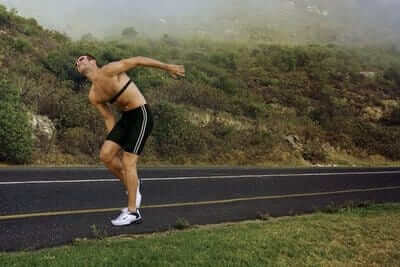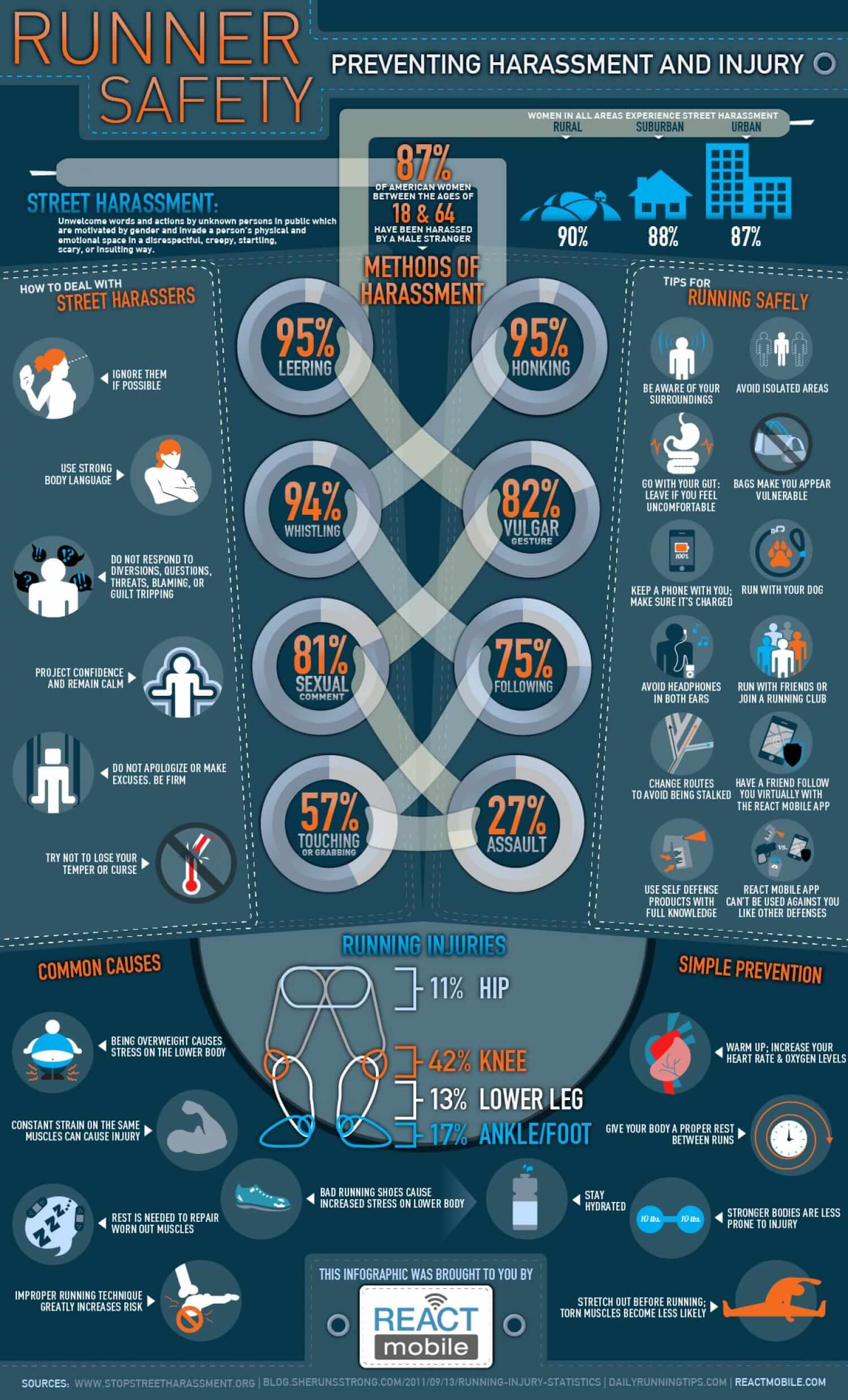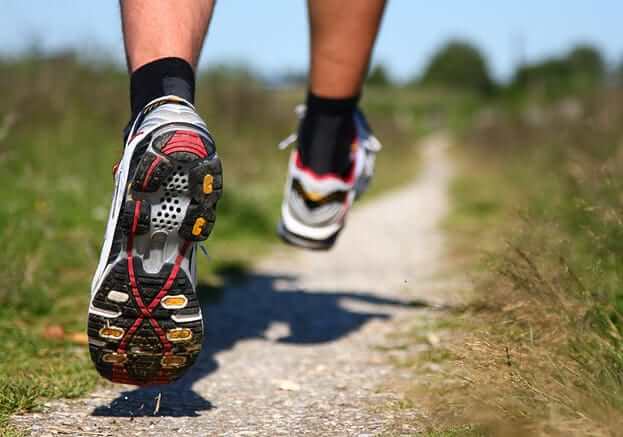Running has become increasingly popular in the US especially since Dan Lieberman’s “Born to run” was published. The idea that humans were born to run is very appealing to runners. Running is truly a natural activity which humans were designed to do. Running is the second most popular fitness activity today in United States. Most people think that running can fit them. There could be nothing more dangerous for an untrained person to think that he is going to become a runner in lieu of weight reducing benefits or just because running is in fashion. However as simple as it may seem, running is a very demanding activity.
This is a quote from my teacher world-leading researcher in the field of running medicine prof. Christopher Powers PT, PhD said: “You need to get fit to run, not run to get fit”.
Various statistic shows that up to 79 % of runners get injured every year. If we were born to run why do we get injured so frequently?

Well the answer is not so simple. Dan Lieberman studied prehistoric humans. The fact that we are genetically so close to them is only a portion of truth. Humans don’t live in isolation. We live in the environment. Our environment and our behavior have significantly changed since prehistoric times. Quoting Irene Davis (the head of national running institute at Harvard University) it is devolution of runner. Prehistoric man ran for survival. That did not spend most of their time sitting at computer desk breaking down their posture and shortening their already short hip flexors. They did not wear shoes. They were close to the ground from gravity perspective and from sensory perspective. They did not run on concrete. They did not run to release stress. They rested when they need it. They did not run 10 miles because their buddy caveman ran this distance every day. They did not read Internet blogs full of misleading short of truth low quality information. They had no behavioral issues.
They neither competed nor were they trying to catch up to a new tribe every now and then. They were simply living the most natural life, albeit full of dangers and infectious diseases. They did not suffer overuse injuries because they naturally feel their bodies and trusted their innate senses when it came to resting. So to react to runners claiming that we were born to run I would say that we were, however our environment has strong influence on which we are and how we behave. Many current scientists believe that we no longer have the same mechanics as they did. Our joint angles and muscle function and motor stereotypes are not the same. So are we still born to run or should we be trained to run?
Such high percentage of running injuries makes me believe that even if we were born to run we should train to run if we are to run injury free.
Injury prevention must be a key factor in the runners training program. Such things as proper shoes, proper running technique, good stretching before and recovery after trainings will instantly minimize the risks of injuries.
Common runners-related injuries, such as shin splints, iliotibial band syndrome, patellofemoral pain syndrome, plantar fasciitis, Achilles tendonitis and etc., could put a runner in trouble of never even reaching the starting line. Running injury prevention, which is based on awareness, ice, and rest and extra stretching after runs is also a treatment of choice, but to minimize the trauma risk injury prevention program should consider each athlete’s individual differences. That’s why injury prevention should be based on a scientific findings and experience of effective athlete’s treatment.
Proper running injury prevention can make a runner uninjured and rested before the next challenge and will greatly reduce the chances of incurring an injury.
Try to avoid the most popular mistakes that lead to overtraining and injuries. Without a doubt, errors in training are the biggest reason of injuries, which prevent runners from taking part in their target challenges.
Consistent training is one of the major keys to running improvement. Conversely, inconsistent training can lead to a variety of injuries. It is vital that you do not miss several days in a row of running and then jump right back into your training program. Doing so greatly increases your risk of injury, as you must build your mileage gradually.
It’s very important to be as consistent as possible regarding your running training, it is vital to listen to what your legs are communicating to you throughout your running training period.
Other causes, like building mileage too rapidly, not following the hard-easy concept of training, as well as simply not listening to your body greatly increases your injury risks, as you must build your mileage gradually.
Taking an extra day of rest and saving the legs instead of running when your muscles feel fatigued or sore is one of the simplest, but yet effective injury prevention strategies.
Other tips and tricks of running injury prevention are:
If we take up golf we learn a technique, should it be the same for running?
If you read Internet running blogs it seems so easy to believe that if you only keep running you will become a better runner. If you start running barefoot or change you’re landing from heel strike to fore foot strike you will become an efficient runner. If you would only change your cadence you will be an efficient runner. Let’s look at research and statistics. To reiterate up to 79% of runners will be injured each year. Research confirms that barefoot running has potential benefits, however up to 45% of runners who start running barefoot will get injured. Research shows that a large number of runners who believe that they strike with mid or fore foot actually strike with rear foot. A year there is 79% of running injuries seems like an epidemic doesn’t it?
So why is running so dangerous if we were born to run? Scientist believe that runners today get injured so frequently because of following reasons:

So let’s look at each of these individually:
Runners need to listen to their body. They need to let go and let their body run for them and if that does not feel right they need to ask themselves a question why?
Runners need to educate themselves about running and let their body decide whether there is something wrong. If they cannot find an answer, they need to seek a professional advice whether a coach or a medical professional specializing in running injury treatment and prevention.
In order to improve running skill a runner needs to understand basic running mechanics and the physics of running. The running skill also known as the running form is basically defines dynamic posture of running. What is the position of your head and trunk, how much do you bend your knee when you land, do you and with your heel or your midfoot, do you overstride, do you push or pull with your hips, do you bounce or float and etc. The best way to improve one’s running skill is to be able to recognize what is your running form and style. Investing in computerized gait analysis or simply using a camera to film you can do this. Being able to see how you run even without experience will certainly create questions. There are plenty of videos of good running form online which can be very useful for comparison. Be aware that your running depends on which shoes you wear so it’s best to film barefoot. Based on your running form and mechanics you learnt from observing yourself run you should be able to correct at least some aspects of your running form. If you still feel like your running efficiency is low perhaps you should find a running coach or a running performance and injury prevention clinic.
Running injury free requires all of the above to be taken into consideration. Injury free running is a necessary component if you want the benefits of running to be much higher than its offsets.
Here are some simple tips on how to stay injury free while running.
Good luck running injury free!!!

Dr. Lev Kalika is a world-recognized expert in musculoskeletal medicine. with 20+ years of clinical experience in diagnostic musculoskeletal ultrasonography, rehabilitative sports medicine and conservative orthopedics. In addition to operating his clinical practice in Manhattan, he regularly publishes peer-reviewed research on ultrasound-guided therapies and procedures. He serves as a peer reviewer for Springer Nature.
Dr. Kalika is an esteemed member of multiple professional organizations, including: